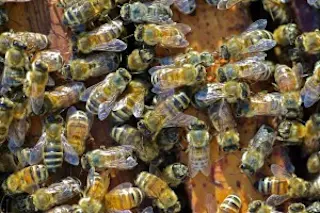Photo: flickr/forevertrustingIn the 1980s, a man named Justin Schmidt invented the Schmidt pain index, which measured the painfulness of stings from 78 species of insects on a scale of 0 to 4 (the only stings that rated 4 were the bullet ant and the tarantula hawk). Of course, pain is subjective, so Schmidt rated all of the stings himself. In that tradition, the author of this study hypothesized that the pain level of a sting also depends on its location on the body. He tested this hypothesis by -- you guessed it -- getting stung. A lot. Turns out that the most painful location for being stung by a bee is on the nostril, followed by the lip and the penis. Yup, the penis.Honey bee sting pain index by body location "The Schmidt Sting Pain Index rates the painfulness of 78 Hymenoptera species, using the honey bee as a reference ...
Nipple, penis, or nostril -- what's the most painful place to be stung by a bee? (The answer might surprise you.)
Discover the Schmidt pain index and how the painfulness of honey bee stings varies by body location.
More on Discover
Stay Curious
SubscribeTo The Magazine
Save up to 40% off the cover price when you subscribe to Discover magazine.
Subscribe













